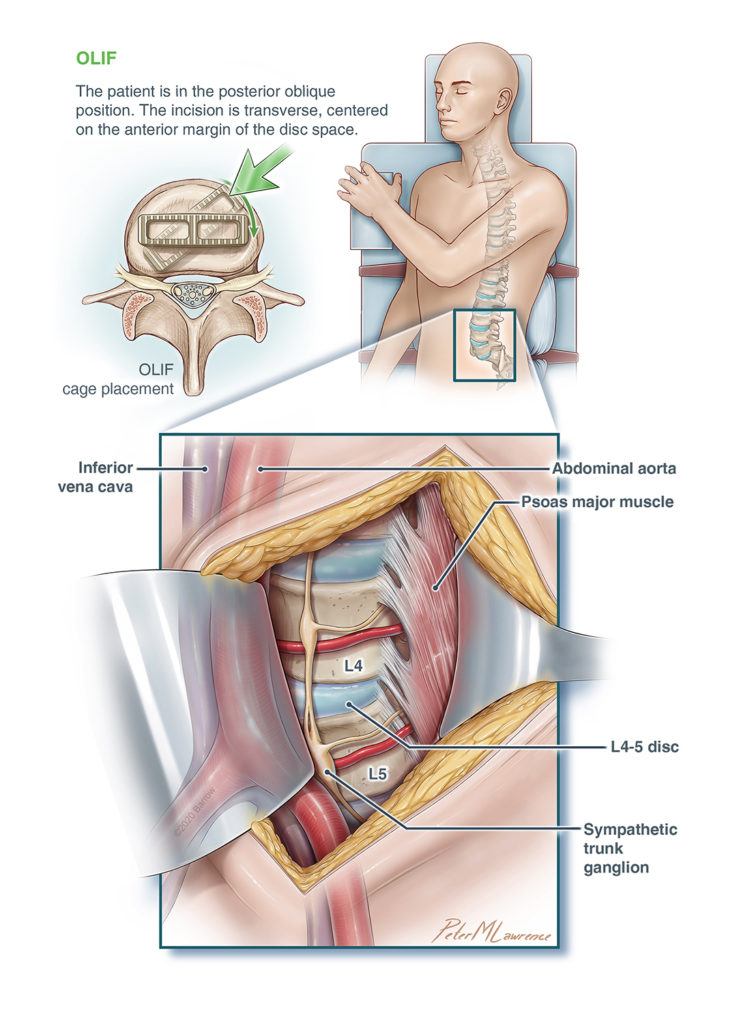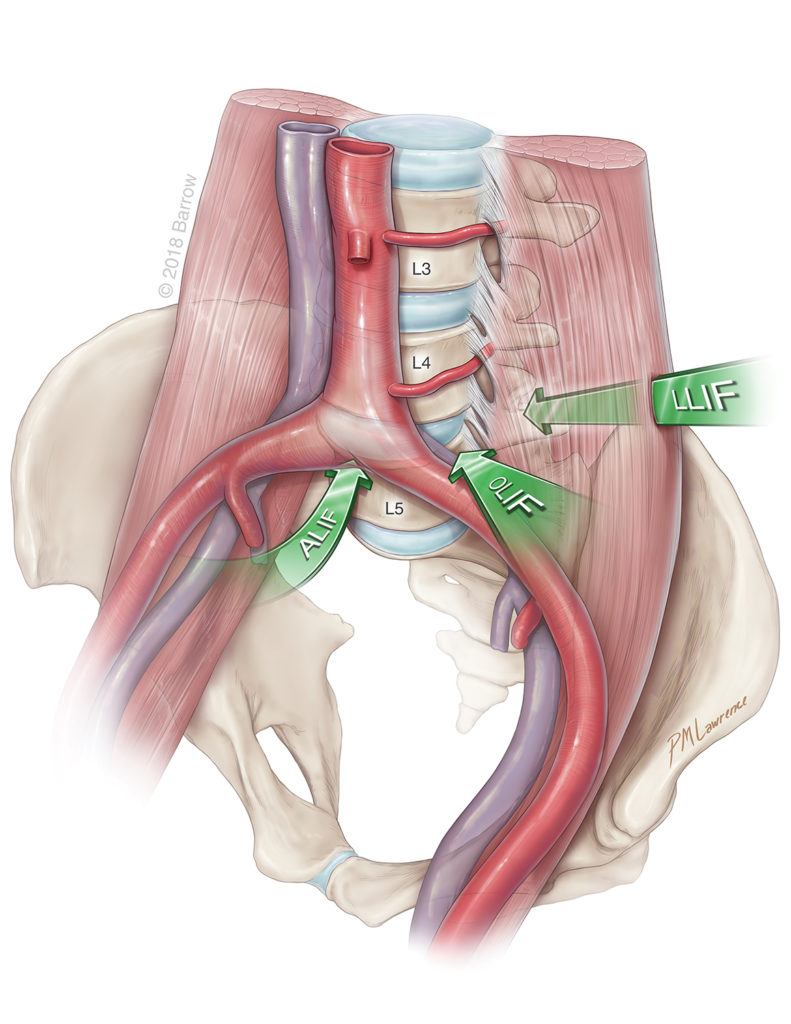
OLIF Surgery
OLIF Spine Surgery Overview
OLIF, or oblique lateral interbody fusion, is a minimally invasive approach to spinal fusion surgery in which the neurosurgeon accesses and repairs the lower (lumbar) spine from the front and side of the body (passing in a trajectory about halfway between the middle of the stomach and the side of the body).

Spinal fusion is performed to join together two or more bones of the spine, called vertebrae, eliminating movement between them. When the abnormal motion is eliminated at a diseased disc, the pain caused by the diseased disc can be eliminated.
The procedure is done by removing the intervertebral disc between the two vertebrae, which normally enables the spine to bend and rotate, and inserting a bone graft in its place. The bone graft heals over several months, fusing the vertebrae together and stabilizing the spine.
During an OLIF procedure, the surgeon uses a corridor between the psoas muscle and the peritoneum to access the spine. The psoas muscles connect the lower back to the thighs and enable movement and flexibility of the back, pelvis, legs, and hips. The peritoneum is the thin, clear membrane that lines the abdominal cavity.
This technique is accomplished by spreading a plane through the oblique muscles, and completely avoids damaging the back muscles. This results in:
- Less blood loss
- Less scar tissue
- Shorter recovery times
- Better outcomes

What is OLIF surgery used for?
OLIF can be used to treat the following conditions of the lumbar spine:
- Degenerative disc disease
- Herniated disc
- Fractures to the vertebrae
- Spinal deformities, such as scoliosis or kyphosis
- Spinal weakness or instability, which may be caused by infections or tumors
- Spondylolisthesis, a condition in which on vertebra slips forward on top of another
Am I a good candidate for an OLIF procedure?
You may be a good candidate for OLIF if you have instability, weakness, or pain caused by one of the previously listed conditions and have already tried nonsurgical treatments.
Spinal fusion changes the normal movement of the spine, which may accelerate wear and tear of the vertebral joints adjacent to the fused vertebrae.
If you do need spinal fusion, your neurosurgeon can help determine which approach is best for you.





